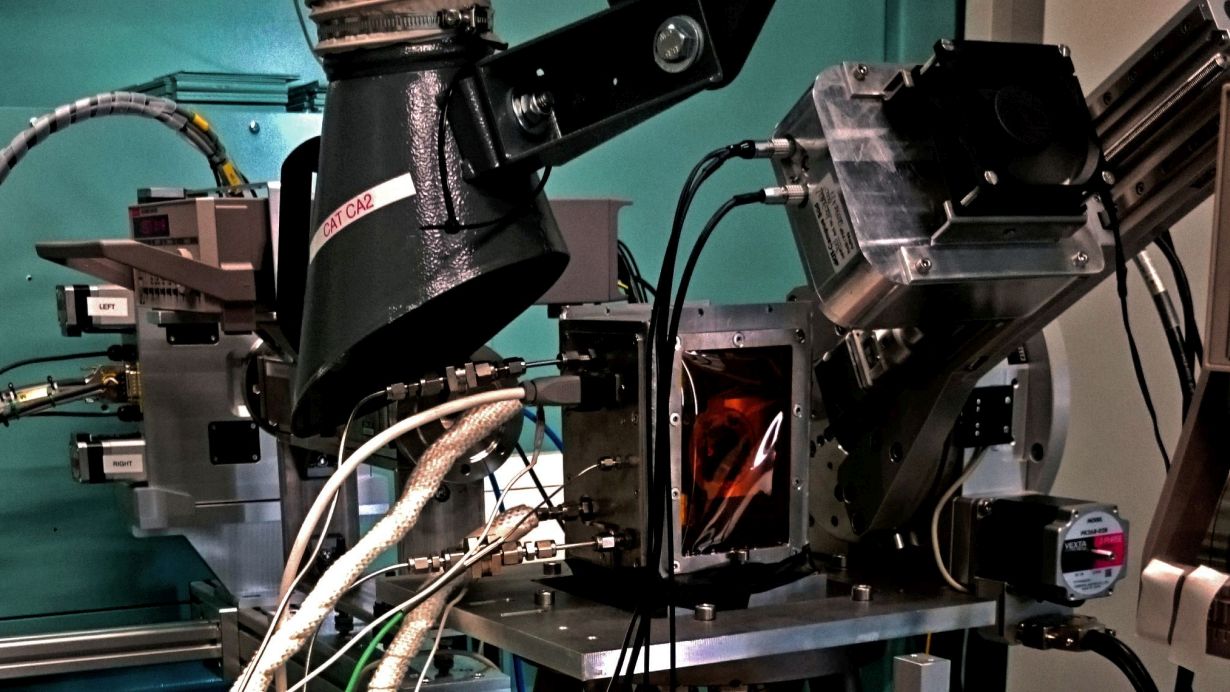The German Federal Ministry of Education and Research (BMBF) is funding the international research project CARE-O-SENE (Catalyst Research for Sustainable Kerosene) with 30 million euros. It aims to improve the production of sustainable kerosene on an industrial scale. To this end, the collaborative partners, including the Karlsruhe Institute of Technology (KIT), are developing tailor-made catalysts to further develop the Fischer-Tropsch synthesis (FTS) established in fuel production for the use of renewable energy sources.
With a share of more than 80 percent, fossil energy sources are still by far the most important raw materials for fuels, heating, and the chemical industry (source: International Energy Agency, IEA). Sustainable fuels are based on green hydrogen and carbon dioxide - and are expected to make a significant contribution to decarbonizing sectors such as aviation, where fossil fuels are particularly difficult to replace. In the CARE-O-SENE project, seven South African and German project partners are therefore researching next- generation Fischer-Tropsch catalysts.
Tailor-made Catalysts for Fischer-Tropsch Synthesis
The focus of this application-oriented project is the development of resource-saving catalysts for Fischer-Tropsch synthesis. In this process, hydrogen and carbon monoxide are converted into hydrocarbons and water under high pressure and at high temperatures. The hydrocarbons, which are further modified slightly, are the basis of kerosene. By using green hydrogen and carbon dioxide from biogenic sources or by separation from the air (direct air capture), sustainable kerosene is obtained in this way.
"The catalysts have to become more efficient, more selective, and more durable," says Professor Jan-Dierk Grunwaldt of KIT's Institute of Catalysis Research and Technology (IKFT) and chairman of the Research with Synchrotron Radiation Committee. To develop an optimal design, he and his team are studying the structures and behavior of the cobalt catalysts used in FTS under real process conditions - at more than 200 degrees and a pressure of more than 20 bar. "We want to understand this precisely so that we can develop tailor-made catalysts," says Grunwaldt.
For their investigations, the team uses methods from synchrotron research: They use high-energy photons to investigate the chemical state of the individual metal particles by means of X-ray absorption spectroscopy on the one hand and the structures of the entire catalyst by means of X-ray diffraction on the other. "This allows us for the first time to watch FTS catalysts at work during operation and to do so down to the molecular level," says Dr. Anna Zimina, head of the CATACT measurement line at the KIT Light Source.
The measurements not only provide information about disruptive structural changes that can occur during the chemical reaction and reduce the yield of the target product. The resulting data also flow into theoretical models and sustainability calculations. On this basis, the researchers can make predictions about how the catalyst will change and what adjustments will be necessary to make the industrial process stable, environmentally sustainable, and economical on this basis. "Theoretical calculations nowadays allow us to map the molecular processes on catalysts and thus better understand them. This then helps to make predictions for better catalysts," says Professor Felix Studt, head of the Department of Theoretical Catalysis at IKFT.
KIT will receive about five million euros from the BMBF funding. Part of this will go to the University of Cape Town as a subcontractor.
The Goal is a Decentralized, More Selective, and Larger-scale Production
According to the researchers involved in CARE-O-SENE, regions such as South Africa, where solar and wind energy are reliably available over a long period of time for the production of green hydrogen, offer great potential for producing green kerosene either on a decentralized basis in modular plants, but also on a larger scale. "We want to leverage this potential with this project and our strong consortium partners and increase the yield," says Grunwaldt.
About CARE-O-SENE
The BMBF is funding CARE-O-SENE with 30 million euros. In addition, the industrial consortium partners are contributing ten million euros. Seven partners from South Africa and Germany are participating in the research project, which is an important component of the German government's national hydrogen strategy. It is coordinated by the chemicals and energy company Sasol and Helmholtz-Zentrum Berlin für Materialien und Energie. The third major partner is KIT with the Institute of Catalysis Research and Technology and the Institute for Industrial Production. Other partners are KIT spinoff Ineratec GmbH, the University of Cape Town, with which KIT has had intensive relations for years, and the Fraunhofer Institute for Ceramic Technologies and Systems IKTS.
Read more:
Current CARE-O-SENE Press Release on Funding
CATACT Measurement Line at KIT
In close partnership with society, KIT develops solutions for urgent challenges – from climate change, energy transition and sustainable use of natural resources to artificial intelligence, sovereignty and an aging population. As The University in the Helmholtz Association, KIT unites scientific excellence from insight to application-driven research under one roof – and is thus in a unique position to drive this transformation. As a University of Excellence, KIT offers its more than 10,000 employees and 22,800 students outstanding opportunities to shape a sustainable and resilient future. KIT – Science for Impact.

